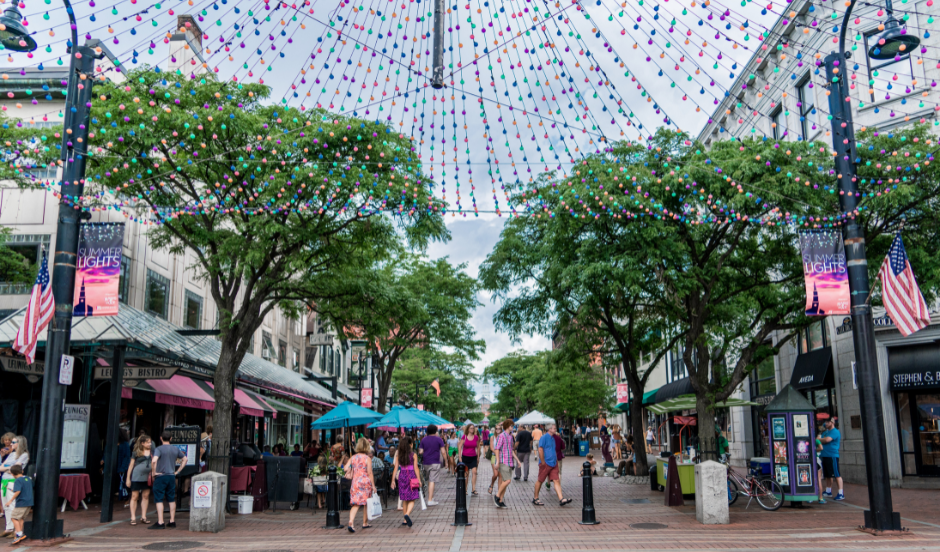Getting Cannabis Retail Right
Google Maps screenshot of licensed cannabis retailers listed in Burlington on the Vermont Cannabis Control Board website.
As of the time we are writing this article the Vermont Cannabis Control Board lists 7 fully licensed cannabis retailers selling products with THC in Burlington, with additional licenses waiting for full approval. So the time is ripe to have the discussion, how many is too many cannabis retail outlets in one small city?
Across the country, discussions around cannabis legalization have tended to focus mainly on the economics and profit-making system. But in the prevention field we know it is just as important to talk about and work together on careful regulation and protections grounded in protecting youth, increasing public health, and advancing social equity.
This is particularly important for youth. Kids need an environment that supports them to remain substance-free while their brains are still developing. There is a lot cooking in there during adolescence, and the increasing promotion and heating up of the new cannabis market is exposing young people to more addictive products, intensive marketing, and conflicting messaging causing things to “boil over”. Youth marijuana/cannabis use has been steadily increasing in Vermont, and nationally has reached its highest levels in 35 years. Additionally, the frequency with which people are using cannabis daily has increased, use during pregnancy is more common, and the interchangeable use of cannabis and tobacco vaping among youth may be contributing to the youth vaping epidemic.
Community normalization of use, as well as promotion and easy access to substances in communities, (such as having a lot of retail outlets selling substances), has been shown to increase high-risk use and the development of substance use disorders (addiction). The earlier people start using any substance the more likely they are to develop problem use, so it is our It is our collective responsibility to make sure the community policies and programs prevent their use and help them thrive.
When availability and promotion of cannabis, alcohol, or tobacco retail is overly dense in a community it can exacerbate existing health inequalities disproportionately impacting economically disadvantaged communities and vulnerable populations (such as low birth weight, poor mental health outcomes, and lower high school graduation rates).
Strategies to Protect Youth, Support Health, Advance Equity
Include language in the town plan that makes a commitment to supporting health through community design, local policy, and infrastructure.
Create buffer for adult-only product sales near schools and other places kids gather
Establish density maximums (“no more than 1 license per block”)
Prohibit use in public and at family-friendly events (alcohol, cannabis, tobacco)
Prohibit any adult-only advertising (content neutral) in locations accessed by kids and/or Limit/Eliminate Window/Sidewalk/Street view advertisements
Require clear warnings and disclosures on labels and at stores – including information about the health risks of use
Local options tax- youth are highly influenced by price
Collect data to help monitor and respond to impacts on kids and increases in use rates
Create structure to make local decisions with representation from public health (local CCB)
Enforce laws prohibiting cannabis use in public.
If you are interested in getting involved in our local efforts to support improved policy and practice related to accessibility and promotion of substance use, join our BetterBTV Work Group! Reach out on our “Connect with Us” page to learn more.


